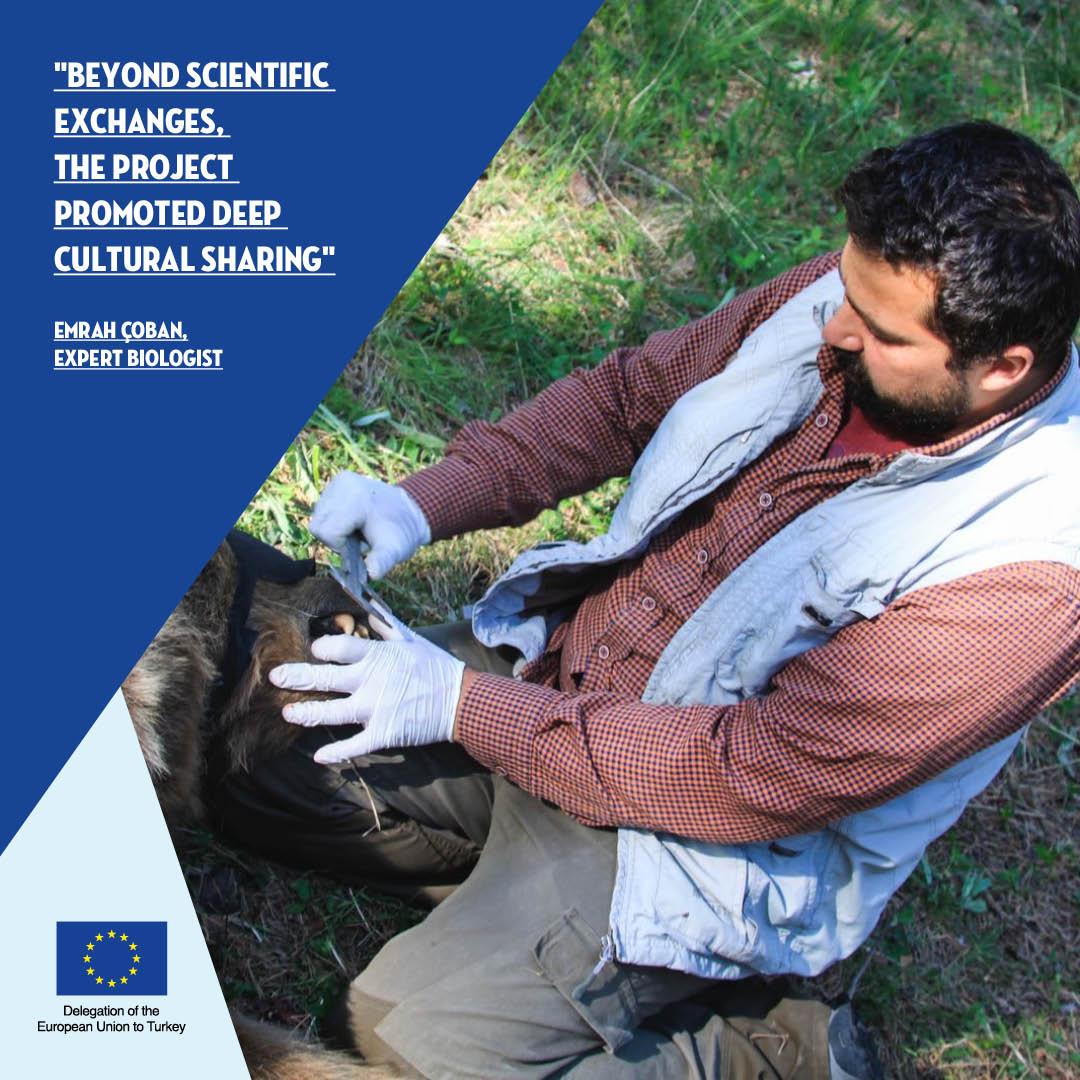Türkiye's wildlife in the East: Protecting brown bears and promoting tourism, two-in-one

While Italy as a whole has only 30 grizzly bears left, Türkiye's KuzeyDoga Association partners up with Italian environmentalists to protect the large contingencies of brown bears in Türkiye's Kars region. Apart from preserving natural habitat, this project supported by the EU promotes eco-tourism at the same time.
The Sarikamis district of Türkiye's Kars Province in the country's East boasts some extremely impressive wildlife specimens. The Sarikamis forests, situated at 2,500m altitude, have been given national park status. The Allahuakbar Mountains in the region are home to the largest Scotch pines in Türkiye. The EU is supporting the preservation of this wildlife and at the same time regional development, including through the promotion of eco-tourism.
The grassroots KuzeyDoga Association is one of the environmental protection actors in the region and interested in preserving, among others, the grizzly bear population. Together with Italian partners and with EU support, the association is drawing on Europe's experience and know-how to ensure the sustainability of the bear's habitat in the region. The project enabled the Turkish partners to exchange experiences with managers of the Adelmello Brenta Nature Park in Italy, and brought Italian experts to Sarikamis to help with bear monitoring and tracking techniques. Given Italy's bear population, which is less than 30, the Italian experts were impressed by the fact that the bear population was in excess of 45 in a single location in Sarikamis. "Beyond scientific exchanges, the project promoted deep cultural sharing," Emrah Coban, KuzeyDoga Association's Deputy President, told us.
For the local population and local tourism agencies, the project has been an eye-opener. "The people of Kars and Sarikamis are enthusiastic about taking part in the project, particularly with regard to its tourism aspect. Furthermore, they now regard grizzly bears more positively. For instance, they give us a call whenever they spot a wounded animal. Recently, we've received calls relating to the wounding of 5 brown bears due to automobile accidents," Emrah Coban, also an expert biologist, explains.
Another important part of the project involves preventing dangerous contact between humans and grizzly bears. Grizzly bears striving to survive on leaves and various seeds within the forest make their way to the city dump just outside Sarikamis after nightfall to forage for food. That is why training courses were provided to villagers and students to educate them about topics such as the brown bears' place in the eco-system and how to behave while in their presence.
As a side effect, Sarikamis' first glacial waterfall was discovered by accident during a preparatory tour organized by the project. The route leading to the top of the waterfall is now included in one of the nature tours developed through the project, in addition to bear watching tours. Kars can now boast nature tourism in addition to cultural tourism among its attraction points, and the grizzly bears are safe: yet another great outcome of our cooperation.
Photo :
Emrah Coban, Expert Biologist with a brown bear





